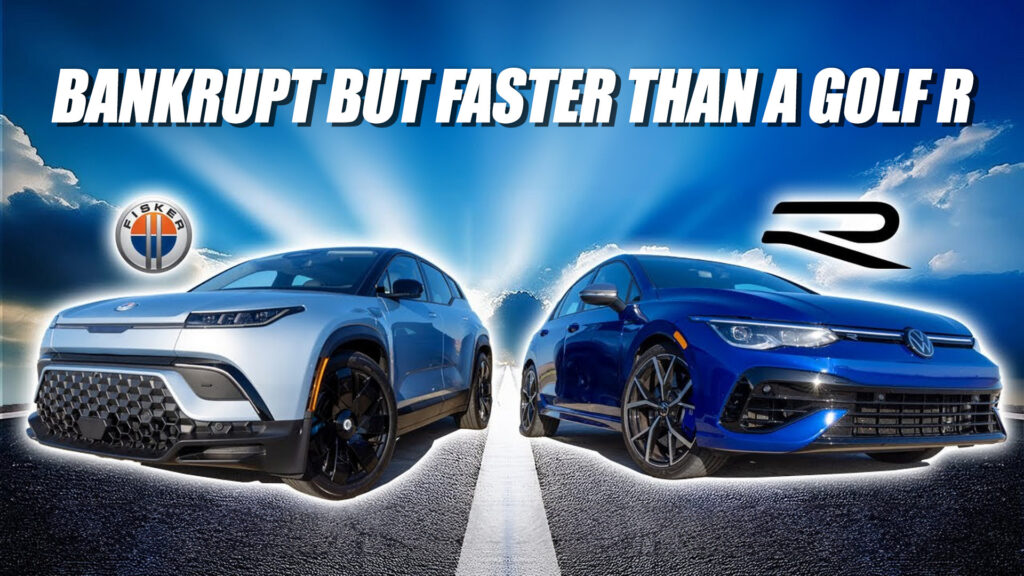- The Fisker Ocean has a significant power advantage as it delivers 468 hp to the Golf R’s 315.
- Despite that, the VW is much lighter and thus has a better power-to-weight ratio.
- U-drag racing results aren’t as close as one might imagine though.
There likely aren’t too many folks cross-shopping the Fisker Ocean and the Volkswagen Golf R. Not only are they not truly in the same segment, one being a hot hatch and one being an electric SUV, but the Ocean is deep amid a lot of bankruptcy drama. In any case, watching them race reveals a lot about modern-day performance.
This competition is interesting because it tests acceleration, braking, handling, and high-speed power output. Known simply as the U-Drag, it begins with both cars competing in a traditional drag race. Then, after they reach the quarter-mile marker, they have to brake, turn around, and get back to the start line as fast as possible.
Read: Hyundai Ioniq 5 N Vs BMW M4 Competition Isn’t Much Of A Competition
On paper, the Golf R is no pushover as one might have thought. Sure, it makes 315 horsepower and 295 lb-ft of torque, which is significantly less than the 468 horsepower and 514 lb-ft of torque of the Fisker. However, the Golf R weighs 3,455 lbs (1,567 kg), while the Ocean tips the scales at 5,364 lbs (2,433 kg), and thus Wolfsburg’s hot hatch has a better power-to-weight ratio.
In the real world, things look good for the Volkswagen for the first few seconds of the race. After that, though, it’s all Fisker. The Ocean surges past the Golf, wins the first drag race, and beats the VW into the corner too. Both cars manage the bend at a similar pace but the Ocean is simply too fast for the Golf to keep up.
Race two goes largely the same way, so let’s take a quick look at the numbers to break down how the Fisker won these races. The VW launches harder but by the time each car is at 60 mph, the Ocean is ahead. It needed just 4.2 seconds to reach that speed compared to 4.6 for the VW.
In the quarter of a mile, the Ocean won by finishing in 12.4 seconds versus the Golf at 12.9. Even the handling g-force measurements proved the Ocean performed better with a lateral force of 1.01 G compared to the 1.00 of the VW. How is all of that possible given the numbers on paper? Don’t forget that the Ocean keeps much of its weight super-low in the chassis. That makes a big difference when it comes to cornering speed. In addition, it might have more weight to handle per horsepower but, being an EV, its power is almost instantly available and sustainable, unlike its ICE-powered rival.




